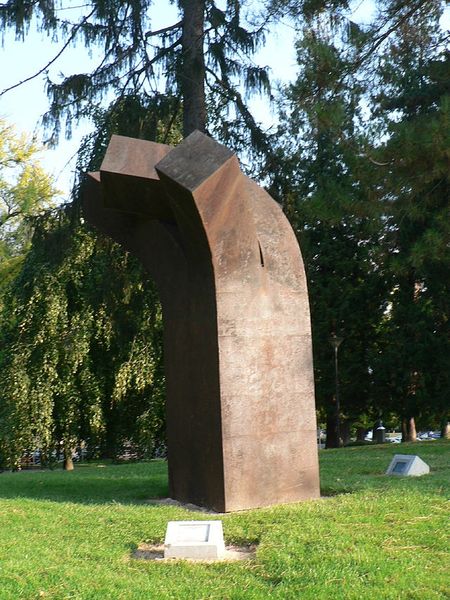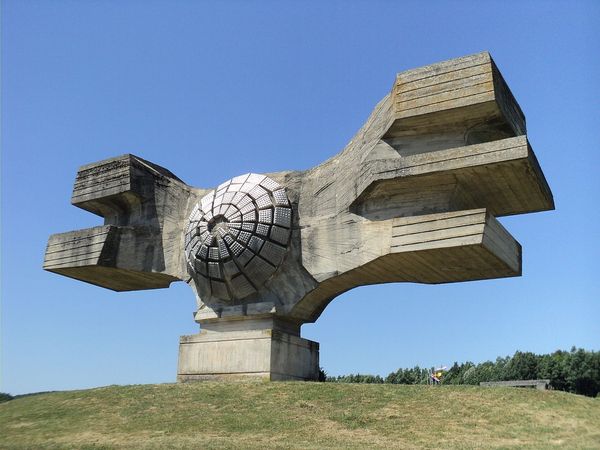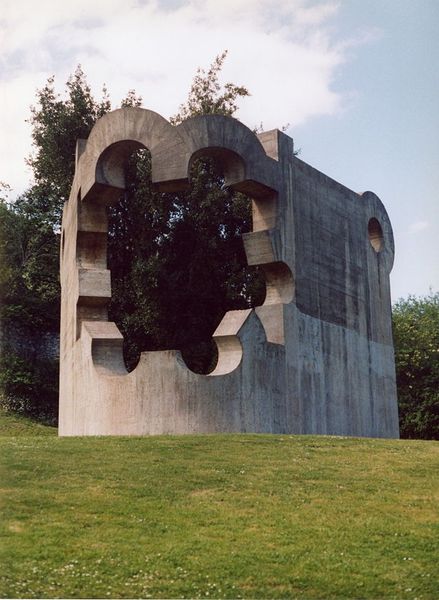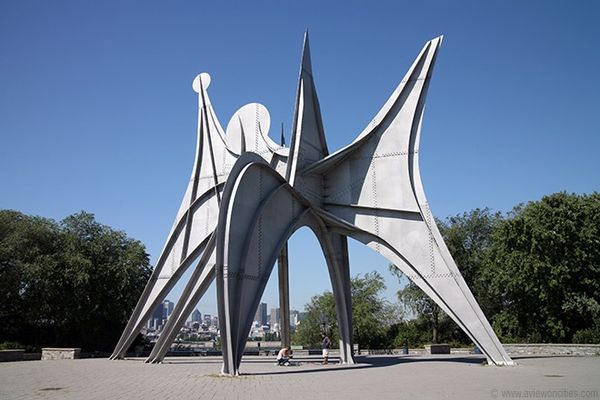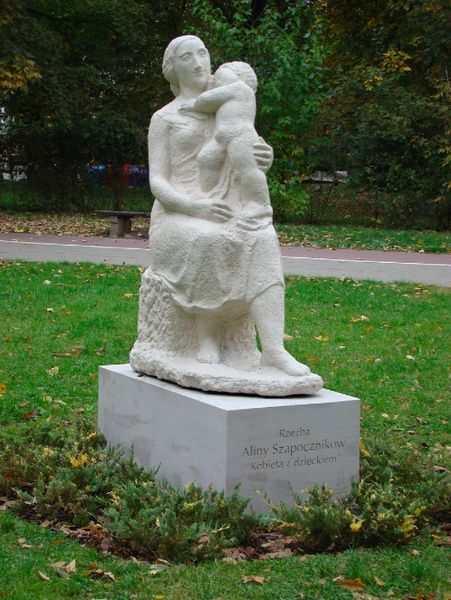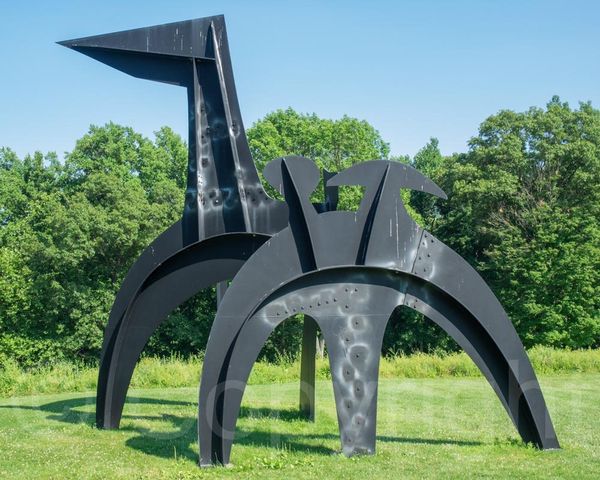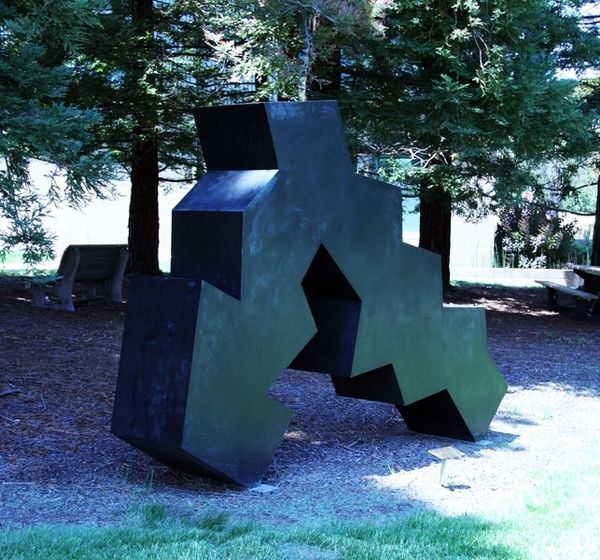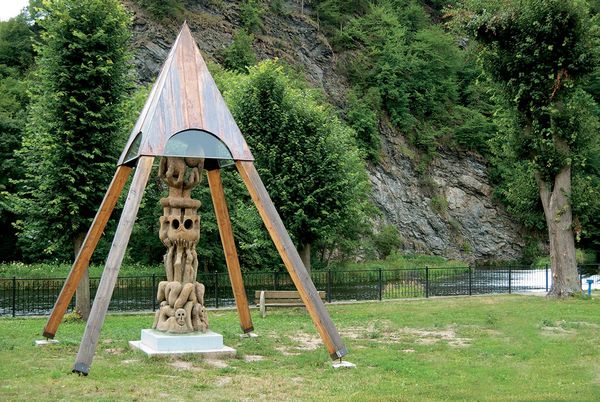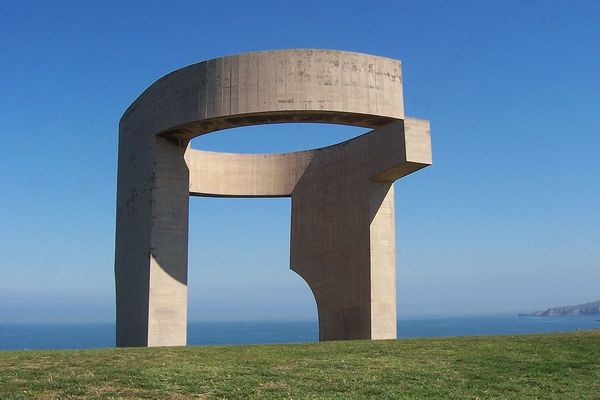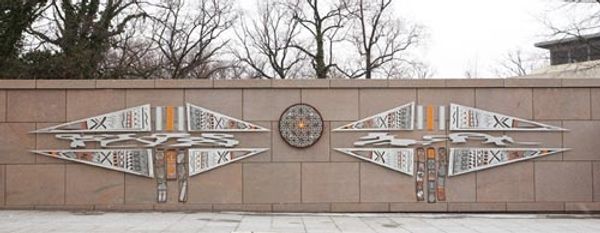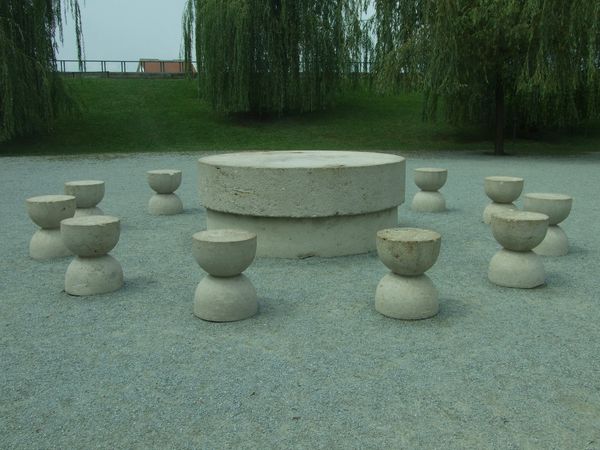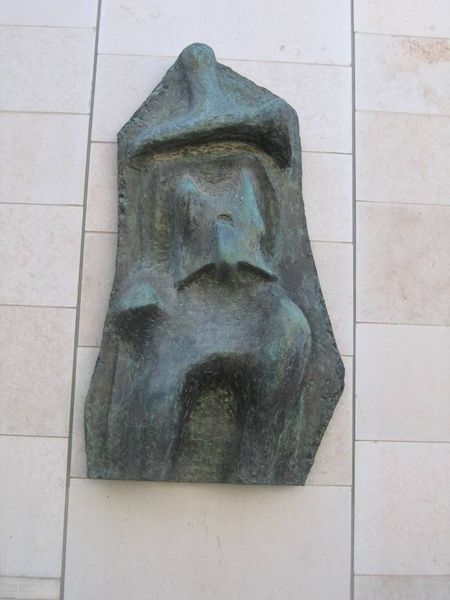
Copyright: Constantin Brâncuși,Fair Use
Curator: At first glance, it reminds me of something ancient and imposing, like a forgotten temple. The sheer scale of the structure seems meant to inspire awe. Editor: Indeed. What we’re looking at is called *The Gate of Kiss*, created in 1938 by Constantin Brâncuși. It’s a key component of his sculptural ensemble located in Târgu Jiu, Romania, a site-specific work made of limestone. Curator: Limestone! That pale stone just speaks of enduring strength and the weight of history, but it also hints at the hands that worked it. Look at those geometric shapes, almost like eyes gazing out, carved into the pillars. They feel incredibly symbolic. Editor: Those "kiss" motifs are really Brâncuși distilling an entire lexicon of connection to its purest, most rudimentary shape. As for materiality, I am curious about the specific processes of quarrying and carving that were used; consider the extraction from the earth, the labor… These choices really emphasize its earthy nature. Curator: Precisely. I believe it represents the symbolic doorway to another realm. The kissing couple, simplified down to these circular forms, is such a powerful representation of union and transition. This isn’t just about physical closeness; it signifies a meeting of souls, a transcendence. We should also recall that this work was made in response to those who lost their lives during World War I. Editor: I understand, though my mind goes directly to the industrial landscape that enabled that production. The kiss motif could easily have been manufactured or machined and made modular with standardized carving templates, reflecting the burgeoning industrial context and a kind of mass production of grief. It really speaks to me about the social and material conditions under which Brancusi was working, that fine balance of humanism and mechanical processes. Curator: I find it incredible how the material lends itself to both interpretations, echoing themes of love, loss, and, perhaps, the mechanization of grief that your view introduces. Brâncuși's brilliance really shines. Editor: Yes, a powerful example of the many dialogues that occur between material and meaning!
Comments
No comments
Be the first to comment and join the conversation on the ultimate creative platform.
